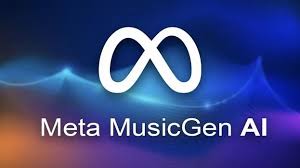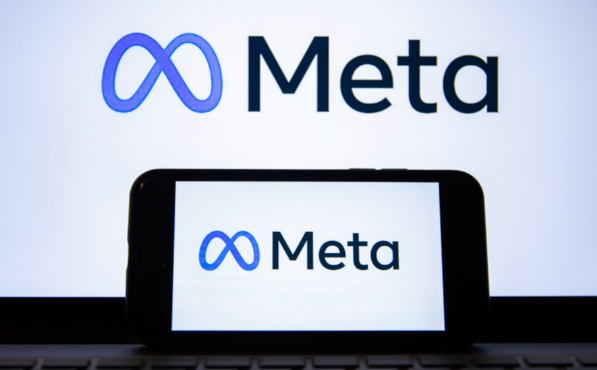With AI now writing poems, drawing illustrations, and coding websites, it was only a matter of time before it started composing music. One of the most impressive tools in this space is MusicGen, a text-to-music model developed by Meta AI. But how does MusicGen work under the hood? What allows it to transform a sentence like “energetic EDM with a tropical vibe” into a full-blown instrumental track?
In this guide, we’ll break down exactly how MusicGen works, from its data pipeline and model architecture to how it interprets prompts and generates coherent music. Whether you're a developer, artist, or AI enthusiast, you'll leave with a clear, actionable understanding of what powers this audio-generating AI.

What Is MusicGen?
MusicGen is an open-source transformer-based music generation model built by Meta’s AI research team. It's designed to generate high-quality instrumental audio directly from text descriptions or optionally, a combination of text + melody.
Unlike diffusion models that work in multiple stages, MusicGen uses a single-stage transformer decoder for more efficient and direct music generation.
Meta released several versions of MusicGen:
MusicGen Small (300M parameters)
MusicGen Medium (1.5B parameters)
MusicGen Large (3.3B parameters)
Melody-compatible versions of each, trained with additional audio input
All models are available publicly via Hugging Face and GitHub.
How Does MusicGen Work? Step-by-Step Explanation
Understanding how MusicGen works means unpacking several key components:
Step 1: Prompt Encoding (Text and/or Melody)
When you enter a text prompt like “relaxing jazz with piano and soft drums,” MusicGen first uses a tokenizer to convert this natural language into machine-readable tokens. This is similar to how ChatGPT or other transformer models read and process language.
If you also provide a melody clip (in .wav format), MusicGen encodes that using a pretrained audio tokenizer called EnCodec (also developed by Meta), which transforms the waveform into discrete tokens.
Step 2: Token Processing via Transformer Decoder
MusicGen uses a decoder-only transformer architecture—just like GPT-style language models—to predict a sequence of audio tokens based on the prompt (text, melody, or both).
Unlike audio diffusion models (which require iterative refinement), MusicGen works in a single pass, predicting audio tokens directly. This makes it:
Faster during inference
More scalable
Easier to fine-tune for specific genres or styles
The model learns temporal patterns, instrument layering, and style adherence by training on over 20,000 hours of licensed music.
Step 3: Audio Token Generation
Once the model predicts a sequence of tokens representing the audio, those tokens are decoded into raw audio using the EnCodec decoder.
This final audio output has a sampling rate of 32 kHz, and is typically 12–30 seconds long, depending on how you set it up.
What Is EnCodec, and Why Does It Matter?
EnCodec is an audio compression model that breaks audio into multiple quantized codebooks (think: layers of musical building blocks). MusicGen uses EnCodec to:
Compress the waveform into tokenized form for training
Reconstruct audio from predicted tokens during generation
The version used in MusicGen encodes audio using 4 codebooks at a time resolution of 50 Hz, striking a good balance between quality and token size. Without this system, MusicGen would need to generate raw waveforms directly, which is far more complex and less efficient.
Key Advantages of How MusicGen Works
No diffusion = faster results
Unlike many other generative models (like Stable Audio), MusicGen doesn’t rely on iterative diffusion. It produces audio in one forward pass.Scalable parameter sizes
With versions ranging from 300M to 3.3B parameters, MusicGen is adaptable to different use cases—from mobile to high-end production.Open-source and reproducible
Anyone can inspect, modify, or fine-tune the model thanks to Meta’s full open release.Supports text + melody input
The melody version of MusicGen allows conditioning the output on an existing tune—something many other music AIs lack.
How Is MusicGen Trained?
Meta trained MusicGen on a proprietary dataset containing licensed music across multiple genres and moods. Key details include:
20K+ hours of music
Instrumental-only (no vocals)
Multiple genre representations
Diverse instrumentation and rhythm structures
The model is trained using a causal language modeling objective—just like GPT—except instead of words, it’s predicting sequences of audio tokens.
Real-World Use Cases for MusicGen
1. Game and App Sound Design
Indie developers can use MusicGen Small or Medium to generate unique background loops for mobile games or meditation apps.
2. Music Prototyping for Artists
Artists use MusicGen Large to explore musical ideas, especially when paired with melody input for harmonization and instrumentation suggestions.
3. AI Research and Audio Modeling
Researchers studying generative AI can use MusicGen to analyze how transformer models handle temporal audio structures versus symbolic input.
4. Creative Coding Projects
MusicGen’s open-source nature makes it ideal for hobbyists and coders building interactive audio experiences.
Limitations of MusicGen’s Workflow
While powerful, MusicGen has a few constraints:
No vocals or lyrics
It does not synthesize human singing—only instrumental audio.Hard to control fine details
Phrases like “slow buildup” or “sharp guitar solo” may be interpreted loosely.Computational demands
MusicGen Large requires a modern GPU with sufficient VRAM (ideally 16GB+).
Still, for open-source instrumental generation, MusicGen is one of the best tools currently available.
Comparing MusicGen to Other AI Music Tools
| Tool | Model Type | Open-Source? | Melody Input | Vocal Support |
|---|---|---|---|---|
| MusicGen | Transformer | Yes | Yes | No |
| Suno | Proprietary hybrid | No | No | Yes (vocals) |
| Udio | Transformer + ??? | No | Limited | Yes |
| Riffusion | Spectrogram-based | Yes | No | No |
Conclusion: MusicGen’s Architecture Makes It Fast, Efficient, and Scalable
To summarize: MusicGen works by combining natural language prompts with transformer-based audio token generation, powered by Meta’s EnCodec system. It stands out from other music AIs for its open-source transparency, fast inference (no diffusion), and ability to accept both text and melody as inputs.
Its architecture enables a range of use cases, from real-time music generation to educational research in generative audio. And because it’s open to the public, developers and artists can directly experiment, remix, and innovate on top of what Meta has built.
FAQs
How does MusicGen generate music from text?
It tokenizes the prompt, uses a transformer decoder to predict audio tokens, and decodes those tokens into audio with EnCodec.
Is MusicGen available for public use?
Yes, all model weights, code, and demo interfaces are available on Hugging Face and GitHub.
Can I use MusicGen for commercial purposes?
Yes, but check Meta’s license terms for specifics on use in products or reselling.
Does MusicGen support singing or lyrics?
No, it currently supports instrumental music only.
What kind of input does the melody version accept?
It takes in .wav files as melodic guidance, which helps shape the rhythm and harmony of the output.
Learn more about AI MUSIC








